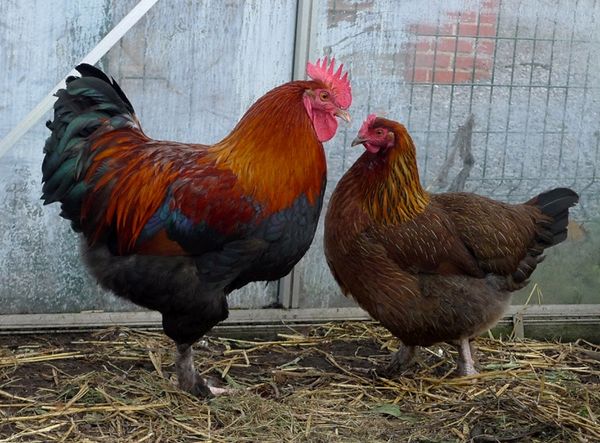Today there are a huge number of various breeds of hens, each of which is distinguished by its unique features.
Against the background of all other breeds, the maran can be called one of the most original and specific, since these chickens carry eggs of unusual brown color. But the value of the breed is not only in the unusual coloring of eggs.
Table of contents
Origin
This breed was bred by French breeders in 1985. However, the unsurpassed qualities of maran could only be assessed in 1914, when the creators presented their new breed at the La Rochelle exhibition.
Since then, these chickens have spread all over the world, poultry farmers from different countries of the world willingly start them.
The name of the breed comes from the name of the city in which it was bred - Maran.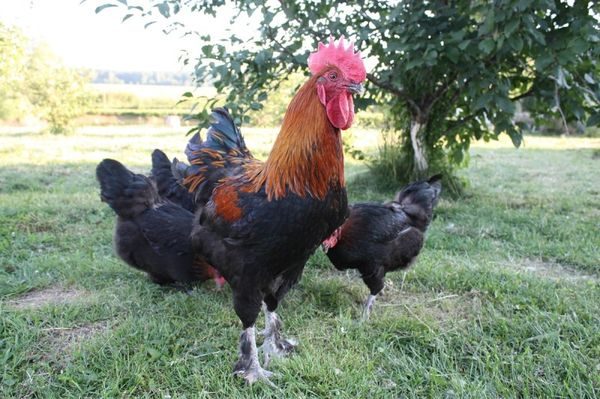
The location of this city is the western part of France. The terrain here is mostly swampy, and because of the proximity of the Atlantic Ocean in the west of France, it is rather cold.
Description
Experienced poultry farmers easily distinguish maran from other breeds. First of all, looking at these chickens, one cannot help noticing their proud, important walk.
Besides, birds have a very spectacular appearance: bright colors and unusual plumage, tight enough to the body. In sunny weather, feathers glitter and shine with bright colors,which gives the hens an even more beautiful look.
Distinctive features of Maran chickens
- Large sizes.
- Stretched shape torso.
- Small head.
- Hanging down scallop with six teeth.
- Reddish orange eyes.
- Earrings are quite large in males.
- Small tailwhich hangs down at a 45 degree angle.
In addition, chickens of this breed can be recognized by strong, well-developed bright legs with 4 clearly divided toes.
Paws, as a rule, do not have a strong feathering, but on the thumbs there is a small amount of fluff. Sometimes the outer parts of the thighs are covered with feathering.
Another distinctive sign is the down collar that adorns the neck of males.
Conditions of detention
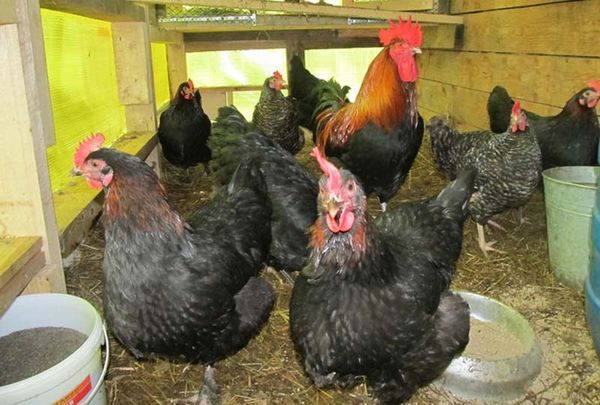 Maran chickens have a calm character, so they almost never have conflicts with other poultry.
Maran chickens have a calm character, so they almost never have conflicts with other poultry.
However, despite their calm and peace-loving disposition, they are quite mobile, therefore they should be kept in a spacious and free aviary. The best option for a marina is walking.
It should be borne in mind that hens that stay for a long time in the open air will be much better.
Despite the unpretentiousness and resistance to disease, these birds do not like high humidity, and, therefore, the chicken coop must be dry. To do this, it is recommended that you ventilate the room as often as possible, and if necessary, provide it with heating or install a fan.
In addition, the marinas need a quality light mode: for full growth, development and good egg laying in winter, they need to provide lighting for 10-11 hours a day.
This breed is very well bred not only in industrial farms, but also on private farmsteads.
Specifications
Maran refers to the meat-breeding chickens. At the same time, both the eggs and the birds themselves are quite large.
- The weight of an adult female is approximately 2.5-3.2 kg.
- Adult Cock - 3.3-4 kg.
- The weight of the young female is from 2 kg.
- One year old rooster - from 3 kg.
- The mass of one egg is 80
- A young hen's egg weighs approximately 65-70
With high-quality care and compliance with the conditions of proper keeping of chickens one layer gives up to 150 eggs per year.
 If we talk about such a breed as dwarf maran, the characteristics will be as follows:
If we talk about such a breed as dwarf maran, the characteristics will be as follows:
- Rooster weight - 1.1-1.2 kg.
- Chicken weight - up to 1 kg.
- Egg mass is about 40 g
Feeding hens
Laying hens. The main diet of maran consists of the same food that other breeds of chickens eat. In order for the birds to gain weight well and carry a sufficient number of eggs, it is necessary to provide them with a full and balanced feeding.
That is why experienced poultry farmers always carefully calculate the norms of feed consumption for their pets.
One laying hen should eat about 75 g of feed during the day if it eats only feed. At the same time feeding should be divided into two times.
In addition to dry food It is necessary to give also various greens, vegetables.
For example, green grass, finely chopped cabbage, turnip, rutabaga. Rushing chicken must necessarily receive such feeding. It should be given three to four times a day. It is the quantity and quality of fresh greens that the chicken eats that are responsible for how bright the yolk of the egg will be.
Compound feed you can buy ready, and you can cook it yourself. 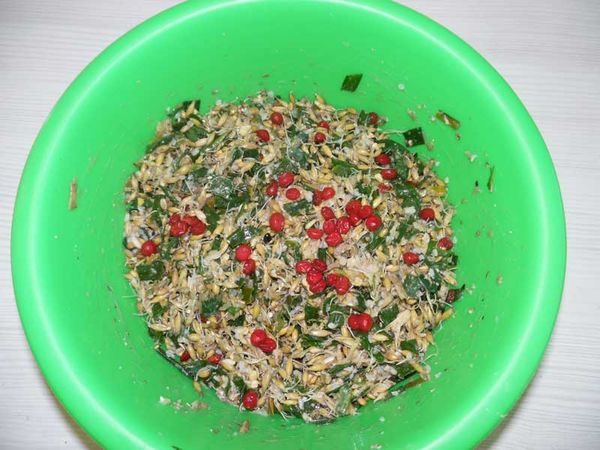 Standard feed consists of the following components:
Standard feed consists of the following components:
- 12% wheat grains.
- 45% corn.
- 7% meal sunflower.
- 7% barley.
- 8% pea.
- 4-5% feed yeast, fish, meat and bone meal and grass meal.
- 7% seashells, limestone, chalk.
- 0,3% salt.
To ensure that the food is well absorbed, it is recommended to give the bird small pebbles and quartz sand.
The main part of the diet of chickens (about 70%) should be carbohydrate feed, and the rest is protein.
Nutritional value of standard feed:
- Protein — 15-18%.
- Fat — 3-5%.
- Dietary Fiber — 4-6%.
Young chickens that are still growing, but have already begun to lay eggs, it is necessary to provide a more nutritious diet.
Ready-made feed already contain the necessary additives for poultry, but they may not be enough. Since calcium is a very important element in order to form a strong egg shell, chickens are recommended to be fed with calcium supplements.
Thus, calcium is contained in crushed chalk, coquina, bone meal, crushed eggshell.
Sometimes calcium feedings are mixed with the main feed, and sometimes given separately. Calcium supplements can be poured into the feeder in any amount, as the bird itself determines how much it needs.
Feeding chickens
To ensure the maximum balance of the required substances for chickens, they must be fed according to a certain pattern.
- First three days of life - chopped boiled eggs and cottage cheese every 2 hours.
- 3-6 day - carefully chopped millet or corn grits are added to the eggs.
- From the 6th day a ground shell or shell is introduced. Feed the chickens should be 5-6 times.
- From the 10th day the number of feedings is reduced to four.
- From 14 days - plant foods (for example, you can give nettle, alfalfa, carrots, clover).
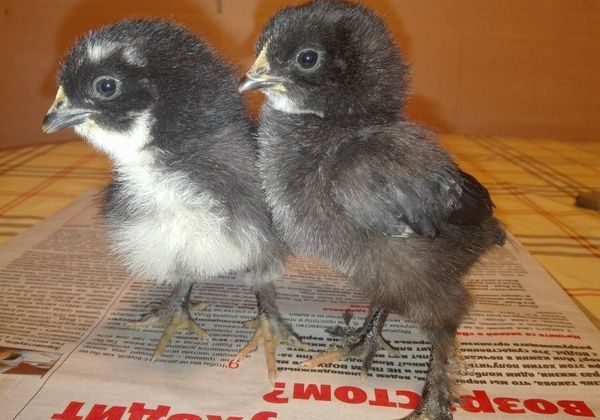 Also, chickens should be given every 4-7 days water with a weak solution of manganese.
Also, chickens should be given every 4-7 days water with a weak solution of manganese.
Maran chickens are as unpretentious in content as adult birds. The first week of life they should be in broder (temperature 30 degrees), and after 7 days they can be released for 2-3 hours on the street.
From the age of 30 days, the nutrition and lifestyle of the grown chickens becomes the same as the adult individuals.
Varieties: copper-black, wheat, cuckoo and others
Although all Maran chickens carry brown eggs, there are several varieties of this breed, differing in different color choices.
Copper black. It is considered the most common variant of the coloring of the breed Maran. The rooster has a black breast with multiple reddish patches. His back and neck are reddish-red, and his tail feathers are bluish-black.
The female is completely painted black. There are small reddish spots on her breast, and a red necklace on her neck. The hen of black and black coral is noticeably paler than the bright cock.
Wheat The feathers on the head and neck of the rooster are colored bright golden, the breast is black. The feathers on the contour are painted in red-brown, and the steering - in black. The hen is practically all golden-reddish, and its head and neck are slightly darker — light brown. Feathers on the abdomen and breast painted in beige.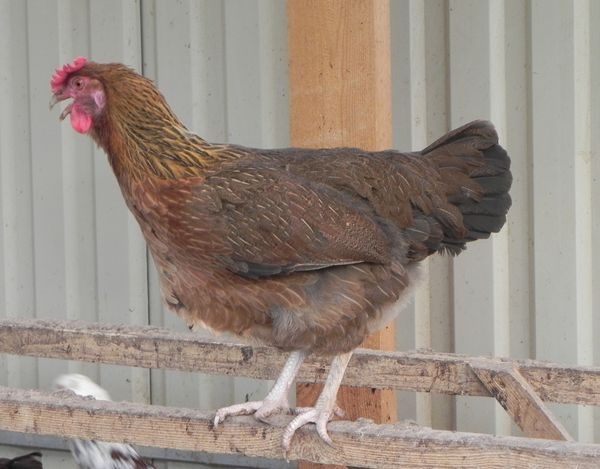
Kukushechny. There are two types of cuckoo coloring:
- Golden cuckoo - a clear cuckoo pattern is more pronounced on females.
- Silver cuckoo - the feathers of chickens are painted in silver-white color. In this case, the roosters have a clearer and more vivid pattern.
Blacktail Almost all of the torso of birds has a reddish color with a golden sheen. The tail is black, painted in small brown spots.
The black. Maran chickens of this species are almost completely painted black. At the same time, they have no color blotches.
White. The birds are completely white.
Colombian. A rather beautiful and unusual color: in this case the chicken is completely white, and its neck is decorated with a black necklace.
Silver black. This color is very similar to the color of black and copper chickens, but in this case the feathers are painted in silver and black.
Dwarf maran. Such birds differ from ordinary maranov in their miniature size. At the same time, they also carry eggs that are significantly smaller than usual ones.
Breeding
This breed is bred as well as any other. You can lay eggs under a hen or chicks in an incubator.
It should be borne in mind that experienced poultry farmers consider eggs of intense dark color most suitable for the best and healthiest chickens. This is due to the widespread belief that when the helminth gets into the egg, its shell loses its color and becomes light brown or completely yellow.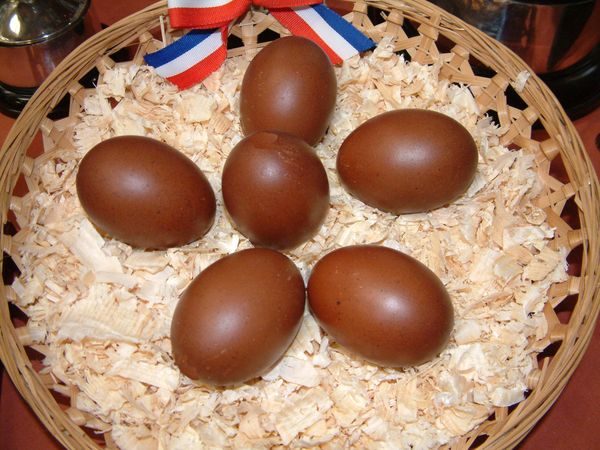
In order to get dark brown eggs from under all the chickens in the henhouse, it is necessary to select the darkest eggs every year. Females that carry eggs of insufficiently intense color are best used for meat.
Since the eggshell of the representatives of this breed is rather hard and durable, during the hatching out, it is necessary to ensure that weak chicks who did not manage to break through the shell and get out did not die.
To do this, it is recommended to maintain the humidity in the room with eggs at 75%. In addition, it is advisable to follow the process of chick removal in order to help the weakest, if necessary, hatch out of eggs, carefully breaking the shell around the place of biting.
Diseases and treatment
The most common diseases of chickens include the following:
Dropsy of the abdominal cavity.
- The reasons: water-salt metabolism is disturbed, the kidneys, heart, liver are impaired.
- Symptoms: The abdomen is enlarged, the abdominal cavity is tense. Hard, tense gait, lethargy.
- Treatment: Elimination of the main causes, piercing the abdomen with a syringe and pumping out fluid. Treatment with diuretics (field horsetail, bearberry).
Ascariasis, heterokidoz.
Birds affected by worms are treated with piperazine, phenothiazine, hygromycin. The drugs are mixed with food in doses indicated in the instructions. It is necessary to regularly clean the room, wash the feeders, drinking bowls with boiling water.
Disinfecting the premises with such preparations as a solution of xylonaph, fluorochlorophenol, caustic soda or a solution of ash alkali. Requires regular cleaning of the chicken coop from litter.
Scabies
The disease is contagious, so sick birds quickly infect healthy. If untreated, chickens can suffer from scabies for years.
The disease is treated quite easily: it is necessary for 30 minutes to hold the paws of the affected chicken in warm soapy water, and then lubricate them with creolin solution.
Fluffy eats
Chickens are affected by wingless insects, food for which is the skin particles that have been torn away and growing feathers.As a rule, these pests can be found in a sick chicken in the area of the cloaca and under the wings.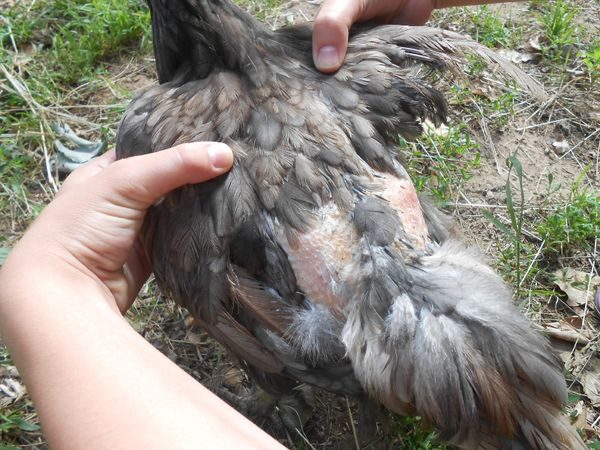
As a treatment, as well as prophylaxis, a box with a mixture of fine sand and wood ash is installed in the hen house. Struck by down and feathers of chickens are burned.
Merits
- Meat and eggs of chicken maran differ excellent taste.
- This breed well divorced in any adverse weather conditions.
- Maran chickens have good immunity and disease resistance.
- Chicken eggs are different from other breeds unusual brown.
- Eggs and bird carcasses have quite large sizes.
- Thanks to the thick and durable shell in the eggs almost never do not penetrate worms.
disadvantages
Perhaps the only drawback of Maran chickens can be called the difficulties that sometimes arise in chickens hatched from the eggs because of the thick shell.
Thus, the majority of poultry farmers, in addition to the positive qualities listed above, note that the roosters of this breed are distinguished by good activity, which favorably affects the fertility.
With proper care and the implementation of all recommendations for the breeding and care of your pets will delight you with excellent performance indicators. Both the chickens themselves and their eggs of an unusual chocolate color will become a real highlight in your household.
Video review of this breed
We invite you to watch a video review of this breed with a description and owner review.
